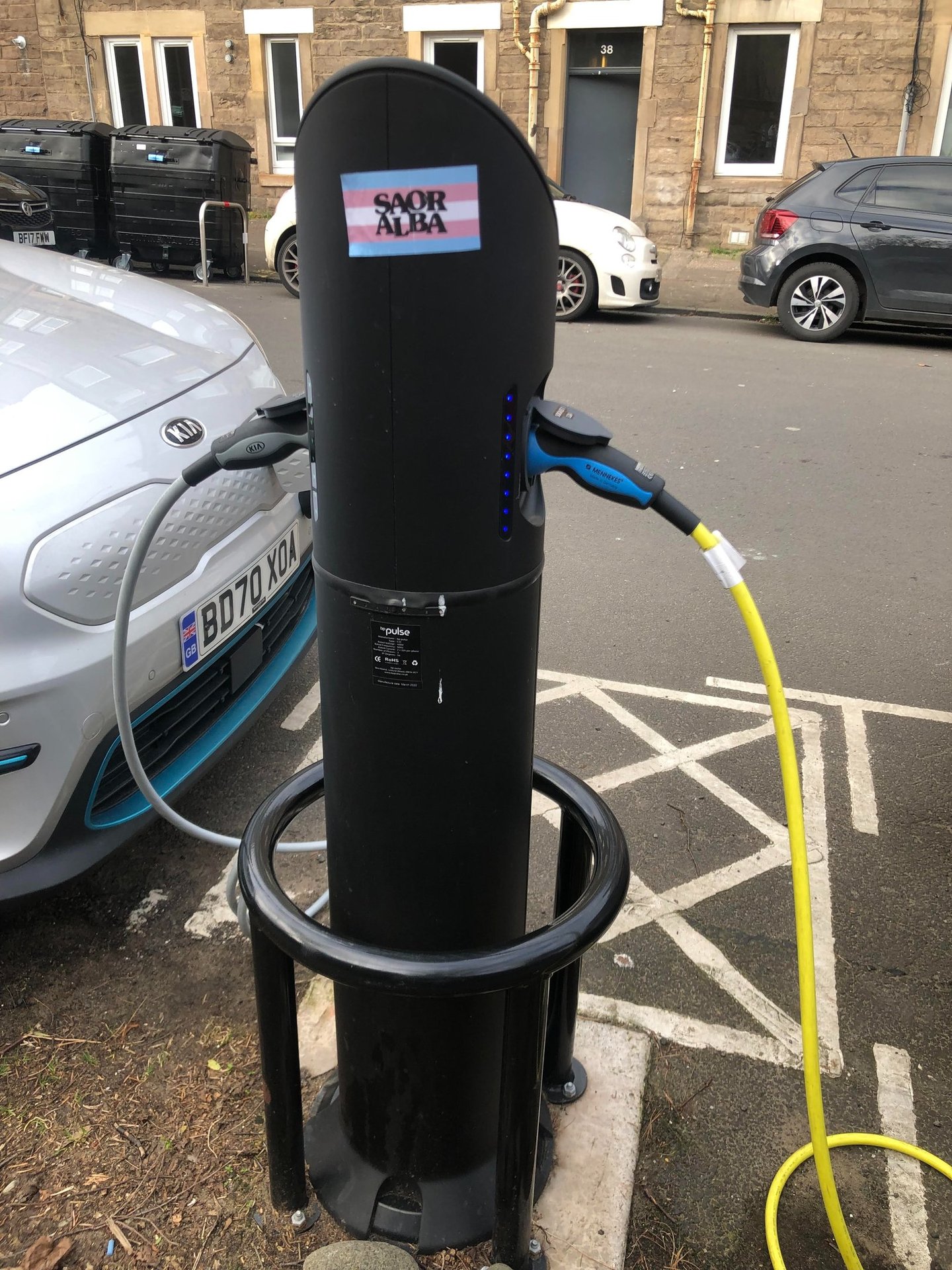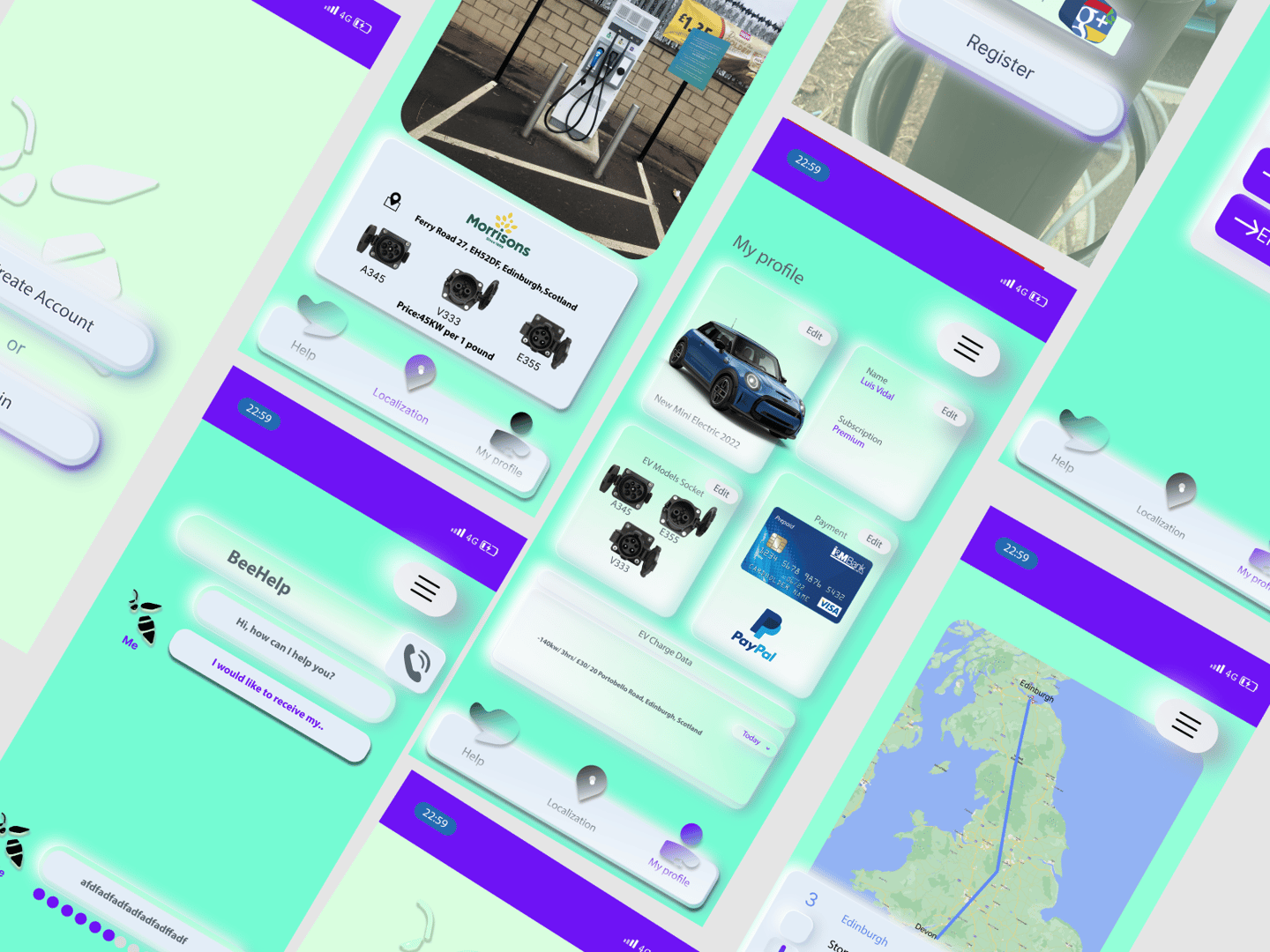


Electripollen
Be a Bee and Charge Your Electric Car at Public Charging Points
Honours Project – Edinburgh Napier University, 2023
This case study explores how UX design can improve the adoption of electric vehicles (EVs) and enhance their integration with public charging networks in the UK.
It contrasts primary data with insights from academic literature, including sources such as Google Scholar, the Edinburgh Napier University Library, ScienceDirect, and GOV.UK.
The target audience for this study is UK-based drivers aged 18 to 65.
Process Thinking: Design Thinking – Lean UX – Agile
1.Secondary Research: Conduct an analysis of competitors, user need groups, and market assumptions to identify niche markets, pain points, and industry guidelines.
2.Observational Research: Apply Design Ethnography to study users in their natural environment, generating quantitative data.
3.User Interviews: Conduct structured questionnaires and use Affinity Diagramming for Contextual Inquiry, collecting qualitative insights.
4.Data Analysis: Utilize brainstorming, graphic organizers, and flow diagrams to visually map user actions and patterns.
5.Persona & User Journey Development: Create detailed user personas and user journey maps based on collected data.
6.Problem Framing: Use "How might we" and Design Sprint questions to explore potential solutions.
7.Solution Ideation: Generate and evaluate possible solutions.
8.Sketching: Develop concept sketches to explore design possibilities.
9.Wireframing: Create structured wireframes to ensure an intuitive and effective UX design.
10.Prototyping: Develop a high-fidelity interactive prototype for a new app aimed at improving the connection between users and electric cars, emphasizing sustainability.
11.User Testing & Evaluation: Conduct usability testing using heuristic evaluation, and Kano analysis to assess user satisfaction and refine the design.
New Solution 💡


Portobello electric charging point. Carmen's photo
The Problem
One of the main challenges with electric vehicles (EVs) is that charging them through the grid supply system imposes additional costs, especially during peak hours, leading to high per-unit electricity prices. Moreover, existing apps in the market often lack effective route planning, causing users to struggle with locating and accessing charging stations efficiently.
The Solution
To address this issue, Electripollen, an advanced mobile application, provides a comprehensive solution for electric vehicle charging.
This app can recognize both public and private charging points, offering users essential information such as:
Pricing details
Photos of charging stations
Precise locations
Compatible EV models
In-app chatbot support
Multiple payment options (credit/debit card, PayPal, NFC, Apple Pay)
An optimized route planner for efficient charging station navigation
By integrating these features, Electripollen enhances the user experience and ensures a seamless EV charging process.




The Electripollen app is estimated to cost £15,000–£30,000 to develop and advertise, with a projected return of £6,893,100. This projection is based on a £9.99 monthly subscription for 690,000 electric car users per year.
In the UK, Scotland has the highest number of EV charging devices per 100,000 people (47), followed by England (36), Wales (29), and Northern Ireland (17). The use of Electripollen is expected to rise as more people purchase electric or hybrid cars. In 2022, sales increased by 40%, and by 2030, the UK government will ban the sale of new petrol cars, prompting a transition to electric and hybrid vehicles.
Furthermore, over the next 14 years, advancements in electric batteries and charging infrastructure will enhance consumer confidence in electric vehicles. This transition represents an overall increase of 80% in electric car adoption.
Carmen Montanes Martinez
UX Designer and Data Scientist
© 2024. All rights reserved.
